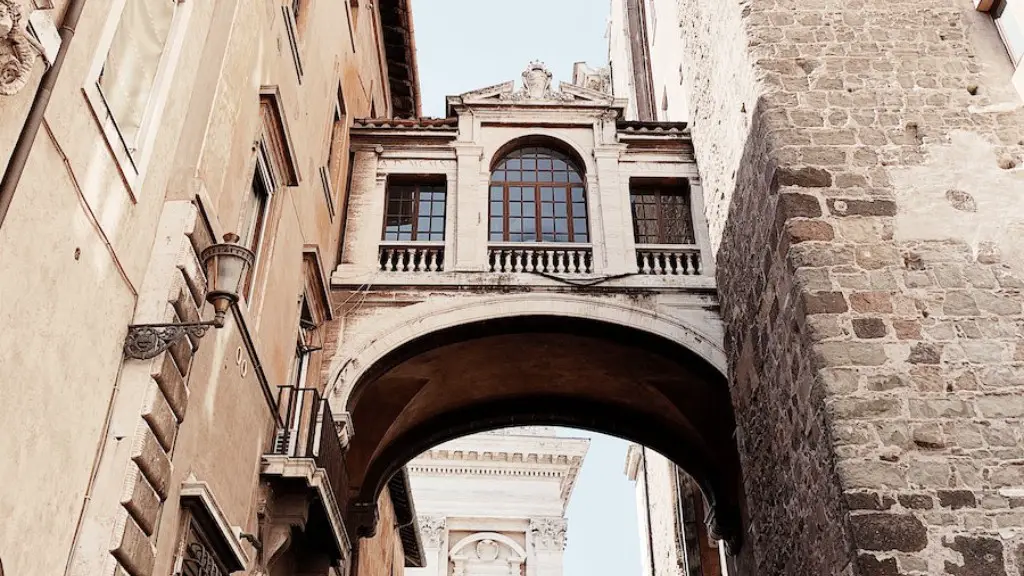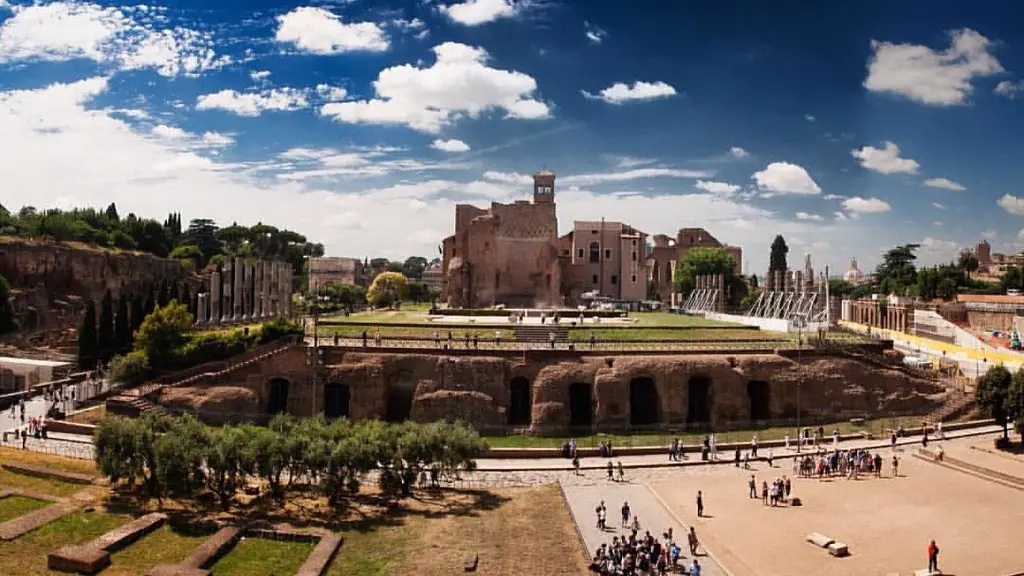Roman Republic
The Ancient Roman government of the Roman Republic was originally comprised of two main institutions: the Senate and the Assemblies. The Senate was composed of Patricians, or members of the upper social class, while the Assemblies were made up of all the citizens of Rome. The Senate was the chief governing body and was responsible for setting policies and managing foreign affairs. The Assemblies, however, had the right to pass laws on their own and approve or reject the Senate’s proposals.
The primary positions of power in the Roman Republic government were held by two annual elected magistrates, known as the Consuls. The Consuls served as the chief executive and judicial branches of the government and held authority over the military and foreign affairs. They also had the right to veto each other. This system helped to keep each other in check.
The Roman Senate was by far the most powerful body in the Roman Republic government. It was made up of 300 members from the Patrician class, and the senators were elected for life. The Senate was responsible for enacting laws, determining foreign policy, making treaties, and providing advice and counsel to the two Consuls.
Roman Empire
After the fall of the Roman Republic, the Roman Empire was established with the support of Julius Caesar. Under this form of government, the Emperor held all the power, and the Senate and Assemblies were greatly reduced in their power and influence.
While the Senate still had some authority in foreign policy and some legal matters, it was the Emperor who held the ultimate power. He was the head of state and government, and had the authority to make laws, govern, and appoint officials to various government positions.
With the establishment of the Roman Empire, the power that the Consuls held was greatly diminished and eventually eliminated. In their place, the emperor was the sole ruler, and he held all the power in the government.
Augustus
The Roman Republic was replaced in 27 BC by a monarchy, ruled by Augustus. Under Augustus, the Senate and Assemblies were restored and allowed to continue function. However, Augustus initially kept control over all the powers of the government, and the Senate had to seek his approval regarding any decisions they made.
As Augustus’ rule became more secure, he began to delegate more of his powers to the Senate, and allowed them to have more control over their own decisions. This period represented a major shift in the Roman government, as it saw a transfer of power away from the sole ruler and towards a more balanced and cooperative system.
Tetrarchy
After the death of Augustus, Rome was divided into four parts, and a tetrarchy was established. This system of government consisted of four co-emperors ruling from separate quarters of the empire, each of which had their own distinct abilities. The two senior emperors had the ultimate power and could veto each other if necessary. Each emperor had their own set of advisors and governors to manage the affairs of the empire.
This form of government was an attempt to bring stability to Rome after the death of its first emperor. However, it proved to be too complicated and eventually became too fractured to manage.
Decline of the Roman Empire
The decline of the Roman Empire occurred over time, as the centralized government and political structures weakened, and the Roman Republic’s system of shared power weakened. This weakening of the political structures caused tremendous instability in the Roman Empire, and eventually led to its decline.
The decline of the Roman Empire was a complex process, and has been attributed to a multitude of factors. Some of these include: the increasing corruption in the government; the increasing militarization and increased taxes; the growing divide between the upper and lower classes; and the increasing power of the Senate.
Late Roman Empire
The Late Roman Empire saw a radical shift in the government structure. Following the decline of the Roman Republic and competing military factions, the Roman Empire finally adopted what is known as the “Principate”, in which the power shifted away from the Senate and Assemblies and towards the Emperors.
The most important position in the government was the emperor, who held all the power and authority. He was the head of state and government and was the only person who had the power to make laws and appoint officials. In addition, the emperor had the right to decide on military and foreign policy, appoint governors to the provinces, and override any other decision of the Senate.
Fall of the Roman Empire
The fall of the Roman Empire was a gradual process, which was accelerated by a number of factors, including the fall of the principate system in the Late Roman Empire, increased taxation, rising levels of political corruption, invasions by the Barbarians and the spread of Christianity.
The decline of the Roman Empire was a complex process, but it ultimately led to the fall of the once great empire in the 5th Century. It is important to understand the decline of the Roman Empire, in order to understand the impact it had on the world, and the cause and effects of its decline.
Political Institutions After The Fall of the Roman Empire
With the fall of the Roman Empire, political institutions in the Mediterranean changed drastically. Political power was eventually concentrated in the hands of religious and military elites, who used their power to gain wealth and influence. The political landscape of the Mediterranean changed significantly in the centuries following the fall of the Roman Empire.
In the Middle Ages, the political landscape of the Mediterranean was dominated by the Catholic Church, which formed the basis of government in most of Europe. This church-based government gave rise to monarchies, and the feudal structures of authority that became a feature of European life during this period.
In contrast, the political system in the Muslim world during this time was much more decentralized. Although there were numerous Muslim rulers, each region operated independently of one another, making it difficult for any single ruler to establish control over the whole region.
Economic System After the Fall of the Roman Empire
The economic structure of the Mediterranean region changed significantly after the fall of the Roman Empire. The economy was largely agrarian and was based around trade and commerce. Trade was conducted across the Mediterranean region and goods were shipped across the sea.
With the decline of the Roman Empire, the economic system changed dramatically. Trade shifted away from the Mediterranean region and towards land-based routes, such as land-based traders, caravans, and other forms of transportation. The introduction of currency during this period also allowed for new forms of exchange and trade.
The changing economic landscape of the Mediterranean region during this period had a major impact on the region’s politics and society. The introduction of new trading routes, currency, and other economic reforms changed the way in which people interacted with each other and how they lived their lives.
Social Structure After The Fall of the Roman Empire
The social structure of the Mediterranean region after the fall of the Roman Empire changed dramatically as well. With the collapse of the Roman Empire, the political and economic systems changed greatly, as did the social classes. In the Middle Ages, the church and feudal system meant that the landed aristocracy was at the top of the social hierarchy, with lower classes below them.
In addition, there were also numerous religious divisions that Impacted the way in which people interacted and conceived of their place in society. These social divisions have endured to modern day, and many of the differences between the cultures of the Mediterranean region can be traced back to this period.
In addition, the social structure of the region was impacted by the introduction of new religions, expansion of Christianity, and increased levels of education. This greatly impacted the way in which people interacted with one another and changed their view of the world.


